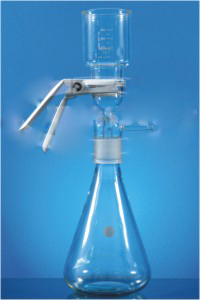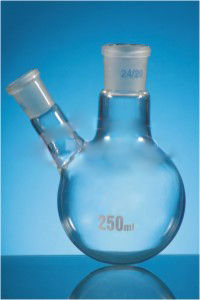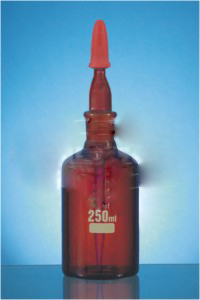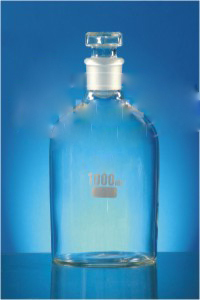Pipette Volumetric
Pipette Volumetric Specification
- Speed Range
- Manual Operation
- Control Type
- Manual
- Features
- Calibrated to deliver exact volume, clear graduation marks, color-coded for size identification, autoclavable
- Temperature Resistance
- Typically up to 250C
- Accuracy
- High accuracy as per ISO or ASTM standards
- Shape
- Slender cylindrical with bulb
- Glass Type
- Borosilicate
- Type
- Volumetric Pipette
- Dimension (L*W*H)
- Varies by capacity, typically slender cylindrical form
- Equipment Type
- Laboratory Glassware
- Equipment Materials
- Borosilicate Glass
- Material
- Borosilicate Glass
- Application
- Laboratory liquid measurement and transfer
- Capacity (Ltr)
- Available in 1 ml, 2 ml, 5 ml, 10 ml, 25 ml, etc.
About Pipette Volumetric
| Pipette Volumetric | |||||||||||||||||||||||||||||||||||||||||||||||||||||||
|
Optimized for Laboratory Precision
Volumetric pipettes are designed with meticulous attention to accuracy, meeting international ISO and DIN standards. Their precisely calibrated, slender cylindrical form ensures that you can depend on exact volumetric transferscrucial for quantitative laboratory analyses across research, academic, and industrial settings.
Durable Construction and Clear Markings
Manufactured from premium borosilicate glass, these pipettes offer outstanding temperature (up to 250C) and chemical resistance. The permanent, clearly marked graduations in amber or white ceramic ensure effortless reading and reliability in demanding settings, while color-coded rings facilitate easy capacity identification.
Safe Handling and Versatile Use
Engineered for user comfort and safety, each pipette boasts smooth, crack-resistant edges and a fine tapered tip for controlled, precise liquid delivery. The autoclavable structure and compatibility with dry or wet heat sterilization make them well-suited for repeated use in various laboratory protocols.
FAQs of Pipette Volumetric:
Q: How should I properly use a volumetric pipette for transferring fixed volumes?
A: To use a volumetric pipette, first ensure it is clean and dry. Immerse the tapered tip into your liquid, draw the volume slightly above the calibrated mark, then adjust to the mark precisely at eye level. Deliver the liquid into your receiving vessel, ensuring complete drainage for accurate transfer, as the pipette is calibrated for TD (to deliver).Q: What benefits does borosilicate glass provide in volumetric pipettes?
A: Borosilicate glass offers exceptional thermal and chemical resistance, which is crucial for laboratory glassware exposed to various chemicals and temperature variations. This material also minimizes the risk of breakage and ensures longevity, even under repeated sterilization and cleaning cycles.Q: When is sterilization needed and how can these pipettes be sterilized?
A: Sterilization is recommended before initial use and between different laboratory procedures to prevent contamination. These volumetric pipettes can be sterilized by autoclaving at 121C or by employing dry/wet heat methods, as their robust borosilicate glass construction withstands such treatments.Q: Where are these volumetric pipettes typically used?
A: Volumetric pipettes are primarily used in research laboratories, educational institutions, pharmaceutical labs, and industrial settings for the accurate measurement and transfer of aqueous solutions or reagents requiring precise volumetric control.Q: What is the process for ensuring accurate measurements with volumetric pipettes?
A: For best results, use pipettes that have clear, permanently marked graduations. Check the color-coded ring for volume identification, and ensure the pipette is calibrated and free of cracks or residues. Deliver the liquid with a steady hand, and allow the pipette to drain completely for full-volume delivery.Q: What distinguishes these pipettes in terms of compliance and quality?
A: These volumetric pipettes are compliant with ISO/DIN standards and calibrated to deliver exact volumes, ensuring high confidence in laboratory results. Their smooth, crack-resistant edges and clear graduations enhance both safety and usability during experiments.Q: How does the color-coded identification help in laboratory operations?
A: The colored identification rings make it effortless to quickly distinguish between different volumes, improving workflow efficiency and reducing the chance of selection errors during high-throughput laboratory operations.

Price:
- 50
- 100
- 200
- 250
- 500
- 1000+
More Products in LABORATORY GLASSWARE Category
Funnel Filtration System
Application : Laboratory filtrations, separation of precipitates and liquids
Glass Type : Borosilicate Glass 3.3
Temperature Resistance : Up to 250C
Material : Premium Borosilicate Glass
Equipment Materials : Glass, Borosilicate, Stainless Steel Clamps
Shape : Cylindrical Funnel
Flasks, Round Bottom, Two neck DIN 12394
Application : Laboratory use
Glass Type : Borosilicate glass
Temperature Resistance : Hightemperature resistance
Material : Borosilicate glass
Equipment Materials : Glass
Shape : Round Bottom
Amber Dropping Bottles, Boro 3.3
Application : Chemical storage and dispensing; laboratory use
Glass Type : Borosilicate 3.3
Temperature Resistance : Up to 250C
Material : Borosilicate Glass
Equipment Materials : Borosilicate Glass 3.3
Shape : Cylindrical with dropper cap
Reagent Bottles, Narrow Mouth
Application : Chemical storage, laboratory reagent containment
Glass Type : Borosilicate glass
Temperature Resistance : Up to 250C (typical for borosilicate glass)
Material : Borosilicate Glass
Equipment Materials : Glass
GST : 06ACOPS0805K1ZD
|
 |
SINGHLA SCIENTIFIC INDUSTRIES
All Rights Reserved.(Terms of Use) Developed and Managed by Infocom Network Private Limited. |


 Send Inquiry
Send Inquiry





